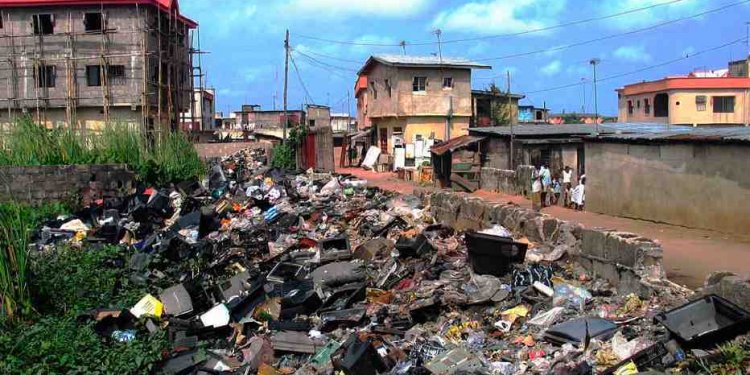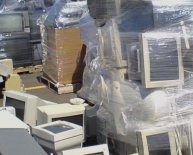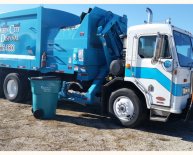
Environmental Effect of Electronic Waste Disposal
(April 2013) Roughly 40 million metric tons of electronic waste (e-waste) are produced globally each year, and about 13 percent of that weight is recycled mostly in developing countries. About 9 million tons of this waste—discarded televisions, computers, cellphones, and other electronics—are produced by the European Union, according to the United Nations Environment Programme (UNEP). And UNEP notes that this estimate of waste is likely too low.1
Informal recycling markets in China, India, Pakistan, Vietnam, and the Philippines handle anywhere from 50 percent to 80 percent of this e-waste, often shredding, burning, and dismantling the products in "backyards." Emissions from these recycling practices are damaging human health and the environment.2
Developing countries with rapidly growing economies handle e-waste from developed countries, and from their own internal consumers. Currently, an estimated 70 percent of e-waste handled in India is from other nations, but the UNEP estimates that between 2007 and 2020, domestic television e-waste will double, computer e-waste will increase five times, and cell phones 18 times.
The informal sector's recycling practices magnify health risks. For example, primary and secondary exposure to toxic metals, such as lead, results mainly from open-air burning used to retrieve valuable components such as gold. Combustion from burning e-waste creates fine particulate matter, which is linked to pulmonary and cardiovascular disease.
While the health implications of e-waste are difficult to isolate due to the informal working conditions, poverty, and poor sanitation, several studies in Guiyu, a city in southeastern China, offer insight. Guiyu is known as the largest e-waste recycling site in the world, and the city's residents exhibit substantial digestive, neurological, respiratory, and bone problems. For example, 80 percent of Guiyu's children experience respiratory ailments, and are especially at risk of lead poisoning.3
Residents of Guiyu are not the only ones at risk. Researchers such as Brett Robinson, a professor of soil and physical sciences at Lincoln University in New Zealand, warn that wind patterns in Southeast China disperse toxic particles released by open-air burning across the Pearl River Delta Region, home to 45 million people.4 In this way, toxic chemicals from e-waste enter the "soil-crop-food pathway, " one of the most significant routes for heavy metals' exposure to humans. These chemicals are not biodegradable—they persist in the environment for long periods of time, increasing exposure risk.
The Basel Convention on the Control of Transboundary Movements of Hazardous Wastes and Their Disposal bans the exchange of hazardous waste, including e-waste, between developed and developing countries. The United States is the largest generator of e-waste worldwide and the only industrialized nation not yet ratifying the Basel Convention.
E-waste is an important global environmental and health issue. Promising policy responses have arisen from the European Union, which is defining the source as responsible for e-waste. With this approach, manufacturers are required to eliminate dangerous toxins from production.
Lucy McAllister is a Ph.D. candidate in environmental studies at the University of Colorado Boulder. This article is part of PRB's CPIPR project, funded by a grant from the Eunice Kennedy Shriver National Institute of Child Health and Human Development. The author was supported by the University of Colorado's Population Center's outreach activities related to CPIPR.
References
- United Nations Environmental Program (UNEP), Recycling—From E-Waste to Resources (New York: UNEP, 2009), accessed at on Jan. 23, 2013.
- Brett H. Robinson, "E-Waste: An Assessment of Global Production and Environmental Impacts, " Science of the Total Environment 408, no. 2 (2009): 183-91.















